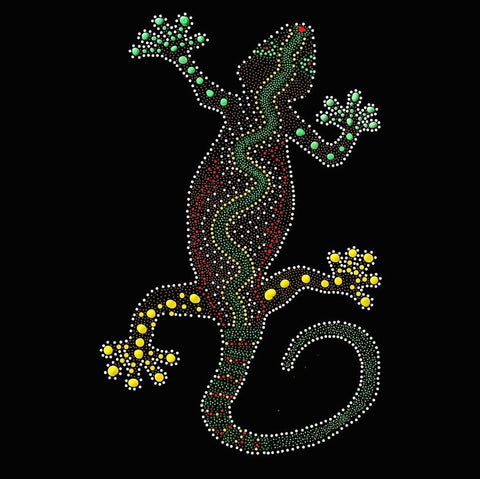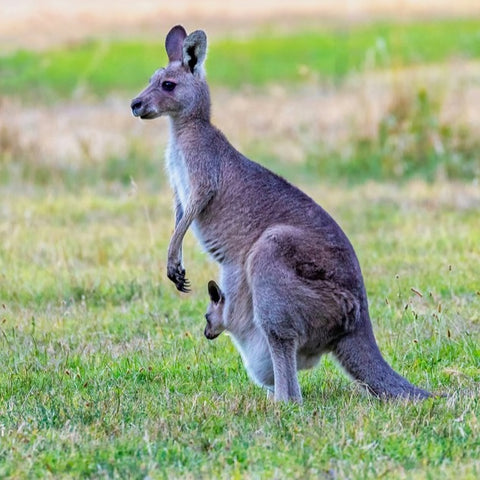The six Noongar seasons are indicated by what is happening and changing in nature – the flowering of different plants, the migration or moulting of certain animals, and the weather patterns - rather than by dates on a calendar.
The six seasons calendar is extremely important to Noongar people, as it guides them on nature’s cycles throughout the year, and has led to a deep respect for the land and plant and animal fertility cycles.
Noongar people are the traditional Aboriginal people from the Southwest of Western Australia. Noongar country -boodja - covers an area from Jurien Bay through to Esperance. To understand the specific indicators of the Noongar Seasonal Calendar, unique to land, is to read nature itself who will always provide us with the knowledge that has guided Aboriginal people for thousands of years.
Birak
First Summer | December and January
As the rains begin to ease, the warm weather of Birak starts to take hold with the afternoon sea breeze cooling those close to the ocean. Easterly winds in the morning, followed by the afternoon sea breeze meant that traditionally, this was the time of year Noongar people burnt country. They would burn the country in mosaic patterns to increase grazing pastures for some animals, to aid in seed germination, ease of mobility across the country and fuel reduction.
Birak also sees fledglings venturing out of their nests, though some still stay close to their parents. Reptiles are looking to shed their old skin for a new one during this season and baby frogs complete their transformation into adulthood.

Bunuru
Second Summer | February and March
The hottest time of the year, Bunuru is a season of little to no rain and hot easterly winds with a cooling sea breeze in the afternoon if you are along the coast. The weather during this time permitted Noongar people to live and fish along the coast, rivers and estuaries and their diet consisted mainly of freshwater and sea foods.

White flowers, especially flowering gums including Jarrah, Marri and Ghost Gums are in full bloom. The female Zamia (Macrozamia Riedle) is also notable due to being much larger than its male counterpart, with huge cones emerging from the centre of the plant with masses of a cotton wool like substance. As the weather continues to be dry and hot, the Zamia seed upon the cone changes from green to bright red, indicating they are ripening and becoming more attractive to animals, particularly the emu, that will eat the toxic fleshy outer part of the plant.
Djeran
Autumn | April and May
Djeran season sees a break in the very hot weather, and the change in the season is evident in the wind with seeds, dust and leaves blown across the landscape. Flying ants can be seen cruising around in the light southerly winds of Djeran. You’ll also notice this season brings cooler nights with a dewy presence for us to discover in the early mornings.

This season sees red wildflowers take bloom, especially the Red Flowering Gum (Corimbia Ficifolia) and the petite Summer Flame (Beaufortia Aestiva). The male and female Sheoaks (Allocasuarina Fraseriana) form cones and Banksia start to display their flowers ensuring there are nectar food sources for the many small mammals and birds that rely upon them.
Noongar people would traditionally eat Zamia seeds that had been collected a season earlier, as well as root bulbs of the Yanget (Bullrushes), freshwater fish, frogs and turtles.
As the season progresses, nights become cool and damp and the days can become cooler too with some rain. Noongar people would at this time start preparing and position their Mia Mias (homes and shelter) for heavier rains in the coming winter months.
Makuru
Winter | June and July
The coldest and wettest time of the year, Makuru was traditionally the time that Noongar people moved back inland and away from the coast. Winds turn to the west and south bringing rain and occasional snow on the peaks of the Stirling and Porongurup Ranges.
During this season, waterways and catchments begin to fill and Noongar people change their diet from eating food from the sea and lakes to hunting grazing animals such as the kangaroo (Yongar). The Yongar not only provided a food source but also Bookas, which are animal skin cloaks used as nights became much colder. Bones and sinews were also used from the Yongar for spear making and manufacturing of a Booka.

Makuru is also a time for animals to begin pairing up in preparation for breeding in the coming season. Wardongs (ravens) can be seen flying together during this season, and upon the lakes and rivers of the Southwest you will notice the influx of Mali of Black Swan as they prepare to nest and breed.
Blue and purple flowers such as Blueberry Lilly (Dianella Revoluta) and the Purple Flags (Patersonia Occidentalis) emerge during these colder months, and as Makuru draws to a close. You will notice the white flowers of the weeping peppermint (Agonis Flexuosa) as the blues start to make way for the white and cream flowers of Djilba.
Djilba
First Spring | August and September
A transitional time of the year, Djilba has days that are very cold, some that are rainy and windy and others where the sun comes through. As the days start to warm up, you’ll hear and see the first of the newborn animals with their parents providing them with food, shelter and protection from other animals and people. The woodland birds will still be nest bound, hence the swooping behaviour of the Koolbardi (magpie), Djidi Djidi (Willywag tails) and the Chuck-a-luck (wattle birds).
This is the start of the massive flowering explosion in the South West. It begins with yellow flowering plants such as the Acacias. You’ll also notice cream and striking blue coloured flowers. As the season progresses and the temperatures continue to rise, you will see the flower stalks of the Balgas (Grass Tress) emerging in preparation for the coming Kambarang season.
Traditionally, the main food source at this time of the year included many of the land based grazing animals including Yongar (kangaroo), Waiitj (Emu) and the Koomal (possum).
Kambarang
Transformational time of the year | October and November
Kambarang is the wildflower season with many yellow flowers, orchids, kangaroo paws and banksias in bloom. Even the Balgas will flowers, especially if they have been burnt in the past year. One of the most striking displays of flowers at this time of year is the Mooja or Australian Christmas Tree, where its bright orange/yellow flowers signal that heat is on its way.

As many things are undergoing transformation with the warm change in the weather and longer dry periods, October is a time of the year you are most likely to encounter a snake.
Reptiles at this time are emerging from hibernation and look to make the most of the warm weather to assist them in getting enough energy to look for food.
We'd love to know which is your favourite Noongar season?






Leave a comment (all fields required)